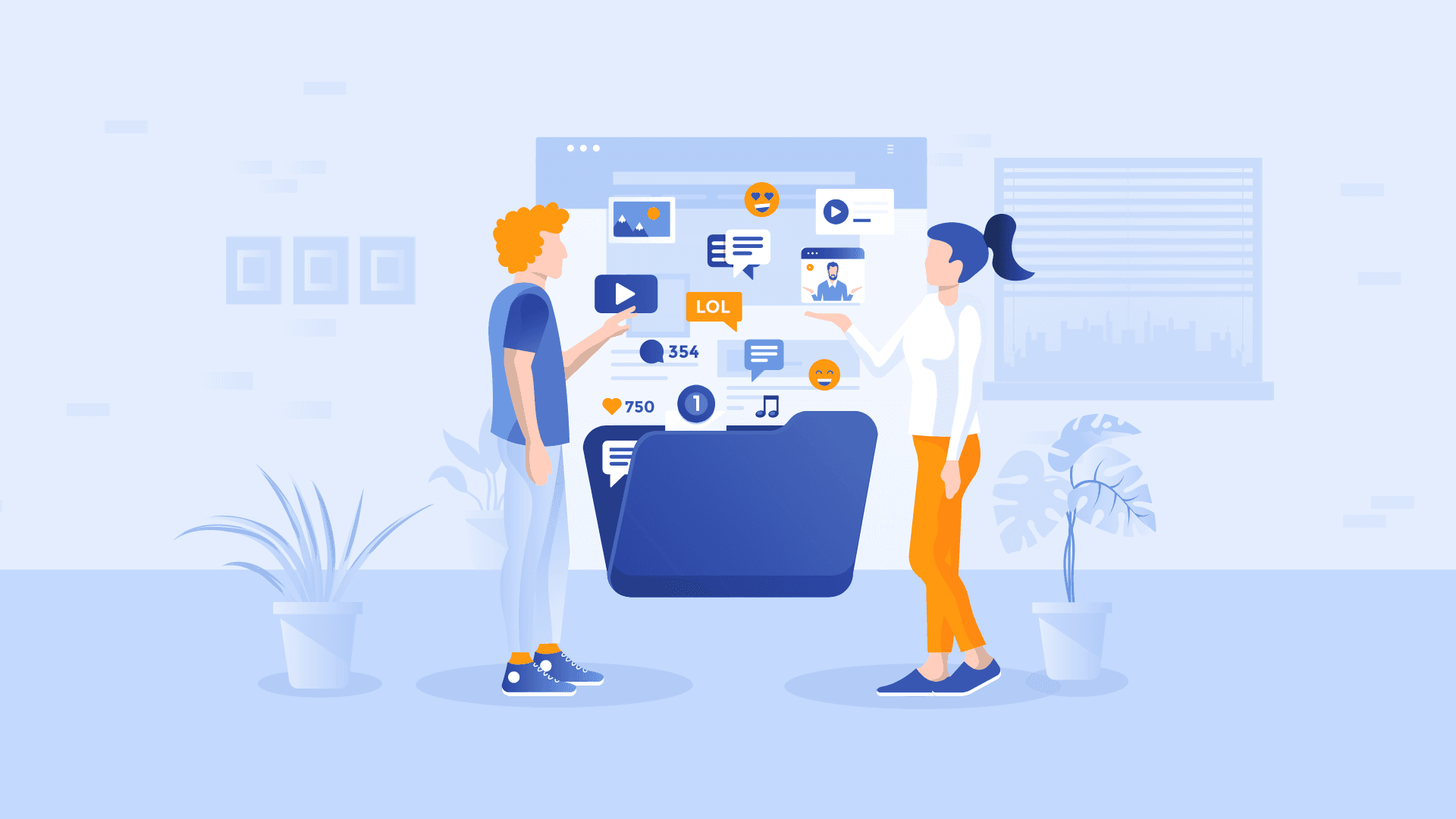Nov 9, 2020 | 7 minutes
How to Get Customers for Your Ecommerce Business: The Channels
Getting customers is crucial, and this is why we compiled the best ways to reach customers for your ecommerce business

How to get customers? Whether you own an ecommerce business or are thinking about starting one, this will be your first prevailing challenge.
A bigger challenge yet will be attracting them in a sustainable way, that is without depleting your finances or energy. But as with any challenge, this one too can be overcome by getting a few things right and reducing the margin for mistakes.
We know there’s too much information out there, and too much to do, so we are going to cut to the chase.
First of all, start with understanding your customer acquisition basics. After this, it will be time to mix and match different channels to craft a personalized approach to bringing in buyers - which is what we’ll be addressing today.
To help you on the journey, we’ve compiled the best ways to reach and convert customers without spending too much. So buckle up, take notes, and start implementing.
The Customer Acquisition Buffet
There are several channels to build your acquisition strategy from, but before getting started, remember to keep your eyes on the prize as you go ahead.
Rule number one of getting customers in a sustainable way: direct your efforts where you know they are needed.
Rule number two: forget about empty or “feel good” metrics.
Now let’s take a look at what matters.
Website Optimization
Website optimization is something you do to make sure customers are satisfied with their experience on your site, and are motivated to buy from you. This process involves:
User experience research, via interviews, organic feedback, and the use of heat mapping tools.
Improving your product pages to make them informative and easy to navigate
Providing timely customer support
The number one goal here is to make your website as friendly to your target customer as possible.
For example, your buyer personas might show that your customers are fearful of shopping for certain products online, as they don’t trust the safety of payment processors or the reliability of delivery.
To address this, you can include information that assures the customer of a safe and reliable experience. There are many ways to do this; examples include the strategic use of microcopy, and pop-ups telling of money-back guarantees.
This can help you establish basic trust and let your customers know that you understand their concerns.
To go even further and get the most out of your pop-ups, try automating them with Make and Poptin. You can set up a simple instant trigger that will create a new lead every time a Poptin conversation comes in.
Search Engine Optimization
Search Engine Optimization (SEO) is all about making your website rank high on search engine results. It can be very effective when done right, and significantly reduce your Customer Acquisition Cost (CAC) while bringing new customers steadily.
SEO rests on the fact that practically everyone uses search engines to find products to buy. SEO lets you rank your website on search engines, and put it in front of more eyes.
To get SEO working for you, you need to cover a few bases:
The website must be optimized for SEO. This means working on the contents of the page, as well as on metadata, and both internal and external links.
You need keyword research, and that means finding words, questions, and problems your customers are using when searching for products like yours on Google and other search engines.
Much like content marketing, SEO is a long term strategy that takes time to show results, but if you are ready to embrace it, it will embrace you back soon enough.
Email Marketing
Email is an effective way to deliver content to target customers. It gives a unique opportunity to speak to your customers on a more personal level, and build lasting and strong relationships with them.
The content of your emails has to reflect your buyer personas.
You want customers to find your emails specific, useful, and non-intruding.
Your email marketing strategy can involve different campaign types, including:
Lifecycle: introductory, cart abandonment, repeat order.
Promotional: offers, discounts, deals.
Educational: guides, infographics, e-books.
In line with the above, it’s important that your email campaigns reach the right audiences. To achieve this, you will need to segment your email lists into groups with specific characteristics that match your goals and expectations.
Your email campaigns will depend on business priorities, which we trust you are able to identify and, consequently, act upon.
To learn how to automate emails for your Shopify store, go to our guide that will teach you how to get started with simple integration scenarios.
Content Marketing
Content marketing is having a moment, and for a good reason. The fight for attention is real, and offering good content is one way to tip the scales in your favor.
With content marketing, you are aiming to provide your customers with relevant and useful content on a regular basis. This not only raises your brand awareness but also:
Builds trust and familiarity
Strengthens your organic reach
In an oversaturated ecommerce market, the sellers who manage to forge a strong identity are the ones with most chances to survive and thrive.
There are many forms of content marketing you can go with. Blogs, product videos, and newsletters might be a place to start for your ecommerce business.
For example, you can start a blog covering topics related to the products you sell. If you sell phone cases, you might write blog posts that compare different phones, or touch upon tech trends, or share tips about phone maintenance.
Your aim here is to establish authority on the subject that relates to your product and build a holistic image of your brand that keeps the customer in a relationship with your business.
Social Media
You need a social media presence. Why? Because social media is the neighborhood your customers hang out in. If you want to catch their attention, social media is the place to do it.
These days, customer acquisition is all about the touch of authenticity and engagement with the people. Customers want a human voice and tone, and that’s what you’ll be aiming at in social media.
Strong social communities can translate into great benefits for your ecommerce business.
Most businesses post 3-4 times a week, so be prepared to do the same, and strategize well what kind of content you will be publishing. In the end, you aim to drive traffic to your store, so provide the value needed for that to happen.
If you are interested in making social media, and Facebook in particular, a player in your customer acquisition strategy, take a look at our Facebook integrations guide that will teach you how to automate workflows with the platform so that you have more time and resources left to do other things.
Referral Programs
Referral programs are a way to put your existing customer base to work. They act as an incentivized extension of word of mouth.
With referral programs, you are offering discounts or deals to your existing customers, whenever they bring new ones on board. Getting your buyers to share your products with their friends and family can be tough at first, so you need to get your incentive right. That’s where buyer personas come in handy once again.
By understanding your customers’ motivations and behaviors, you can tailor rewards specifically to them, incrementing the chances that they will recommend you.
For example, you might have learned that your customers want fast results, and are unlikely to plan far ahead. With this in mind, they will be less incentivized by a discount for future purchases, but more incentivized by a free product you send them when someone they refer places an order.
Getting your incentive right is not all you can do to lead a successful referral program. You can also:
Build a dedicated landing page to help your customers learn about the program.
Create an email campaign about your referral program.
Install referral widgets on your website that would catch the attention of your customers.
Affiliate Marketing
Partnering with affiliates (other businesses or influencers that have a similar customer base to yours) allows you to drive more potential buyers to your site and reach new audiences you might not have otherwise connected with.
Affiliates earn commissions from the sales they drive, but they market your products, so it’s a win-win situation. Affiliate marketing also makes use of the power of social proof. Customers are more likely to trust and buy from sites that they have been directed to by someone who they already follow and trust.
Paid Ads
Paid advertising deserves a mention on our sustainable customer acquisition buffet. Yes, it might only deliver as long as you keep pumping money on ads, these still have a place in customer acquisition. After all, both search engines and social media platforms act as massive drivers for product discovery.
Our recommendation is to carefully target your efforts based on data and to run the numbers to see if the return on investment (ROI) is reasonable and attainable.
Conclusion
When it comes to attracting customers to ecommerce stores, creativity counts.
Thinking outside of the box, connecting the dots in the buyers’ journey, and looking past old-school aggressive advertising tactics is the new gold standard.
To sum up, less is more. While it’s easy to get overwhelmed with the options out there, and even easier to want to try them all, remember that quality comes before quantity.
If you’ve done your work, then trust your carefully selected acquisition channels, and let them do their job. But to take them one step further, consider automating what those channels do for you and your business. Make is here to help with every step of the way.
Good things, and customers, come to those who automate.
Ready to make the automation revolution happen?

